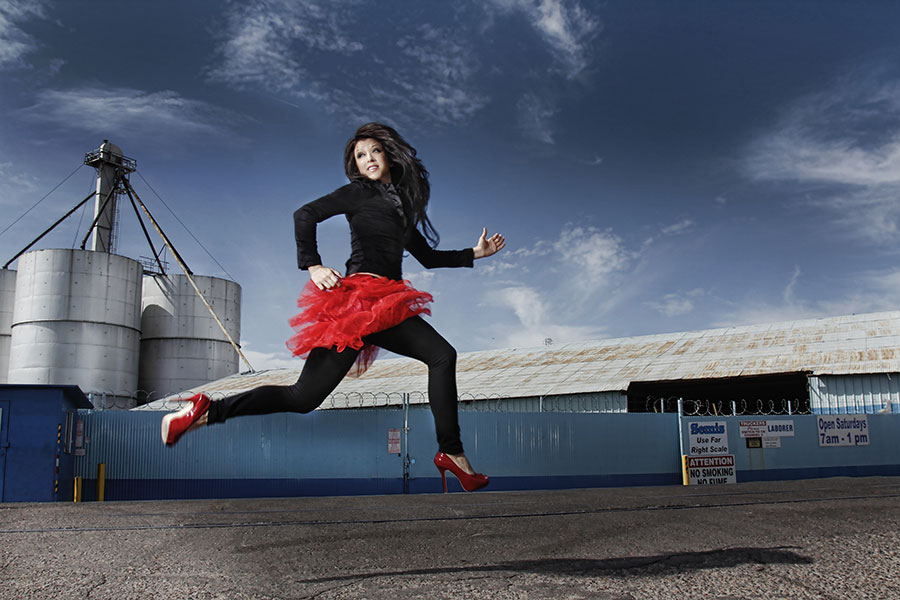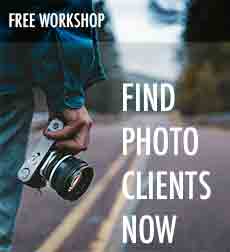
One of the challenges of commercial photography is that you are obligated to hit a home run every time your number comes up. You are the clean up hitter, or the “go to” guy when the team needs a guaranteed win.
It can be a little stressful at times.
Like standing on a set with 11 professional models ($1250+ rate for each), 4 MUA’s ($650 rate for each), two assistants ($450 rate each), a digital tech ($1100 rate), two assistant art directors, on senior art director, five (5!) client reps who flew in for the shoot from Singapore, and three Hollywood trained dogs ($1000+ rate each). Let’s not forget the stylist ($2500), her two assistants ($900 per) and the catered munchies/lunch (a little north of $1100).
And of course in a rented studio with rented lighting gear and a set that ran approximately $15,000 to build. The props bill was nearly $5000, and wardrobe had been purchased/rented for about $4000.
And by the way, the shot has to be – HAS TO BE – made and delivered by the next morning to make the deadline for insertion – which was already an extension.
The art director, set designer, stylist and photographer had spent at least a couple of dozen hours together on the set design, casting, and various other challenges this shot would create.
The cast was hired, the set was built, the lighting was in place and the tests had been made and approved.
And then… “Excuse me,” says the client representative, “on the flight over we have made some changes.”
At that moment the world becomes a very quite place, and the music that was blaring a moment ago is now drowned out by the thumping in your chest. Three things pass through your mind.
- He really didn’t say what I thought he said. (Denial)
- I can do a couple dozen years for homicide. (Anger)
- What the hell, I have always loved Walmart, might as well welcome people to the store. (Acceptance)
Now remember that the production is in full swing. The models are in makeup, the set is made, the tweaks to the lighting are being finished off, and the team is about an hour or so from first Polaroid.
And they had some ideas on the flight over. That needed to be heard. Now. At this moment. Here.
The AD (who was still in denial mode) ushered us all into a corner of the studio where the meeting table was and as we sat he began telling them that changes would be… awkward… at this point.
AWKWARD?!?!?!?! Are you kidding me? AWKWARD?
And here we go… the paper sketches come out and the first one is a minor change to the headline. Whew… no problem really.
The second one is a casting issue.
Really. In the middle of the day we are going to do a casting for a couple of hours from now? In THIS universe?
Then the kicker… changes to the set.
At this point the AD is starting to turn red… see, these are changes that while being made are not something they can lay off to me or anyone else. Their client wants changes to the set an hour before “showtime” and he is losing it in a situation where not losing it is a much better option. There was talk of scrapping the job, sending everyone home and regrouping after they had made all the changes to the layout that were wanted. The client people were frustrated, the agency was frustrated and the photographer just sucked it up and got started fixing what was broken.
A photographer is somewhat used to dancing on a wire and changing directions. It is how photographs are made. A quick meeting was made with the set director and the clients. The clients showed what they wanted changed and the set designer calmly listened and offered a compromise that would keep us on schedule, and not add significantly to the billing. The client reps then understood the problem that their changes would create. They asked for the some suggestions to add changes and in the end they got 50% of their changes applied and with no slowdown in schedule. And they were happy.
As to the casting, the photographer told the clients that finding someone of that description would not be difficult, but having them be able to do a call for 5 or 6 to choose from would be impossible. They understood, but were disappointed. The photographer told them to trust him, he would get them someone perfect for the image. A call was made to the agency and the booker who the photographer normally worked with, and in an hour there was the talent, suitcase and wardrobe in hand. He was perfect for the shoot, and the client reps were very happy. The agency booker had listened and knew exactly who to call.
The photographer can’t really help with the headline fix. Just sayin’…
The point is to go from ‘denial’ and ‘anger’ (normal traits) as quickly as possible so you can get past ‘resignation’ and on to ‘just fix the damn thing’ mode.
And then just fix the damn thing.
This is not planning for contingencies, more on that later, this is being able to keep your head, and focus on the problem and the possible solutions. The photographer knew the clients were not wanting to sabotage the shoot, and their ideas were simply a zealous commitment to making the ad better in their minds.
Once we realize that the other people want to do just as good a job as we do, the panic moves off and we can focus on the camaraderie of being “in it together”.
And that means being able to change directions, while dancing on a wire between failure and historic awesomeness, and then roll with all the punches thrown and come out smelling like a rose.
(That’s a lot of metaphor there Don; ed.)
If the photographer had not had the skills to make stuff happen, and quickly, the entire job could have gone south in a hurry. How does one practice doing this precision chaos focus?
You just do.
- Don’t get rattled on set. Whatever it is, fix it or replace it with a backup and keep on working.
- Don’t get mired in what went wrong. Focus on what went right and how that can be repeated.
- Don’t blame anyone else. That creates instant pushback, anger and a loss of focus in the people you need most to help you get through the problem.
- Don’t bring attention to it. Screaming and throwing a fit so others can see is a stupid and self aggrandizing way of seeking sympathy and whatever… do it on my set and you are gone.
- Smile. Yep. No matter what, keep that air of “we got this.”
- Do not relinquish the control of the set to anyone else while you screw around with something that went wrong. Let someone else do that minutia crap and you stay on top.
- Think fast, think creatively, think temporary if you must. Whatever can be done must be done, so roll with it and make it work.
- Trust that the members of your team want to make this right for you. They may over compensate… that is normal. Smile, move on.
- Never let ’em see you cry. Or whine. Or be petulant or complaining or blaming or shaming or anything other than a supremely in charge leader.
- Accept responsibility. It is your set. If you get all the credit on a win, you get to take some heat if things are screwed up. Pull on your big person pants and accept the responsibility for getting it right.
If you let it, the microcosm of all the stressful possibilities that can seem insurmountable will kill the creative inside you. Learning to roll with it, find solutions, dance on that wire while balancing a huge team – well, that is what makes it one of the more exciting professions I think.
Be proactive, be creative and keep on dancing.




